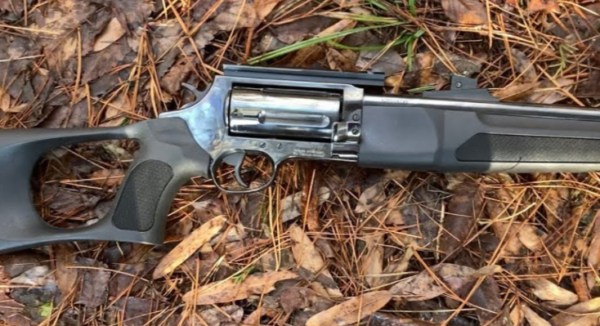Hi dear visitor welcome to our blog.
Crosman Dpms Sbr is one of the best brands in the world of guns.
But some people face problems with this model.
In this guide, we explain 15 common problems of this model with unique solutions. So let’s start now.
Crosman Dpms Sbr Problems

The Crosman DPMS SBR, while an excellent air rifle, can sometimes present a few common issues. Users have reported occasional feeding problems, where the BBs fail to load properly.
On rare occasions, the CO2 cartridges might leak or not seal correctly. Additionally, some users have found inconsistencies in the full-auto mode, leading to erratic firing patterns.
It’s advised to refer to the user manual or professional help for troubleshooting these problems.
1. Inconsistent Pellet Velocity


Cause
The inconsistent pellet velocity in the Crosman DPMS SBR can stem from various sources, the most common being inadequate gas pressure and pellet disparity.
Gas pressure may fluctuate due to temperature changes, causing inconsistent propulsion and hence varying pellet velocity.
Pellet variations, in terms of size and weight, may also contribute to inconsistent velocity.
Solution
Addressing the issue of inconsistent pellet velocity initially involves identifying the cause.
Once determined, the gas pressure can be stabilized by storing your Crosman DPMS SBR in a controlled environment to minimize temperature effects.
Invest in high-quality, consistent pellets to ensure uniform velocity.
It’s also important to maintain your airgun properly, including regular cleaning and lubrication, to ensure optimal performance and consistency in pellet velocity.
2. Misalignment of Sights
Cause
The misalignment of sights, a common issue faced by many firearm users, primarily originates from poor installation or damage to the firearm’s sighting system.
Correct sight alignment is critical to accurate shooting, as even minor misalignments can result in significant shot deviation.
Key takeaway: Misalignment primarily originates from poor installation or damage. Accuracy is heavily dependent on correct sight alignment.
Solution
The solution to sight misalignment involves careful inspection and adjustment of the sights. If the sights are installed improperly, they should be realigned and secured by a professional gunsmith.
In case of damage, replacing the affected components is recommended. Regular maintenance and checks are also essential to prevent and promptly address any misalignment.
Key takeaway: Proper inspection and adjustments, replacement of damaged parts, and regular maintenance prevent sight misalignment.
3. Erratic Blowback Function
Cause
The Erratic Blowback Function is often caused by the improper assembly of components, the usage of low-quality ammunition, or an excessive buildup of dirt and grime.
It can also be due to weak springs or worn-out parts within the firearm. It’s essential to understand that regular maintenance, usage of recommended ammunition, and timely replacement of components can prevent this issue.
Solution
To address the Erratic Blowback Function, disassemble and clean the firearm thoroughly, focusing on the bolt carrier group and the gas system.
Always remember to use high-quality ammunition and replace any worn-out parts or springs. It’s recommended to seek professional help if the problem persists after these steps.
4. Difficulty in Charging Handle
Cause
The common cause of difficulty in operating a charging handle predominantly arises due to a lack of lubrication or dirt and debris accumulation within the mechanism.
Over time, this can cause significant friction and hence, make the action of charging more strenuous. Regular cleaning and adequate lubrication can prevent this issue.
Solution
The solution to this difficulty revolves around regular maintenance and inspection of the charging handle.
It’s recommended to clean and lubricate the charging handle routinely to ensure smooth operation.
5. Faulty Magazine Release
Cause
A faulty magazine release is often the result of wear and tear or improper usage over time.
As the magazine release is a critical component that allows the magazine to lock into place and feed ammunition properly, any malfunction can prove detrimental to the overall firearm operation.
Damage to the magazine release can result from overuse, mishandling, or exposure to harsh environments.
Solution
The most effective solution to a faulty magazine release is usually to replace the entire component.
Specialized tools and expertise may be required for this process. It is essential to ensure the replacement part is of high quality and compatible with your specific firearm model.
6. Inaccurate Trigger Response
Cause
The cause of an inaccurate trigger response is often due to either flawed programming or a lack of adequate information for the system to make a correct response.
Quite often, it can be a combination of both. These issues may arise due to an oversimplified model of the problem, a lack of diversity in training data, or a misunderstanding of the problem at hand.
Solution
Addressing an inaccurate trigger response requires a two-pronged approach. First, it’s essential to review and refine the underlying programming.
This may involve revising algorithms or re-evaluating the logic used. Second, it’s crucial to expand and diversify the training data provided to the system.
This can improve the system’s ability to recognize and correctly respond to a wider range of triggers.
7. Insufficient Gas Pressure
Cause
Insufficient gas pressure can be a result of various elements including blocked gas lines, faulty regulators, or an inadequate supply.
The gas lines could be obstructed by debris, rust, or even small insects, restricting the flow of gas.
Similarly, a faulty regulator may not be able to maintain the correct pressure, contributing to an insufficient gas supply.
It is essential to identify the cause promptly to prevent any disruption in the operation of gas-powered appliances.
Regular maintenance and inspection of gas lines and regulators can help in the early detection of problems.
Solution
Addressing insufficient gas pressure requires a professional approach. If the issue is a blocked gas line, a professional can safely clear the blockage.
A faulty regulator can be replaced with a new, properly functioning one. In the event of an inadequate supply, coordinating with your gas supplier to increase the supply can resolve the issue.
Remember that dealing with gas systems should always be left to professionals due to the potential risks involved.
8. Occasional Misfires
Cause
Occasional misfires can occur due to several factors, often associated with malfunctioning components of the engine system.
For instance, worn-out spark plugs, a faulty ignition coil, or clogged fuel injectors could be the culprits.
Worn-out spark plugs, faulty ignition coils, and clogged fuel injectors are common causes of occasional misfires.
Solution
Addressing occasional misfires entails undertaking a thorough inspection of the engine system to identify and rectify the faulty components.
Regular maintenance which includes changing spark plugs, cleaning fuel injectors, and checking the ignition system can mitigate the risk of misfires.
9. Inadequate Safety Mechanism
Cause
The cause of an inadequate safety mechanism often rests on a lack of comprehensive planning and foresight.
Organizations may underestimate the potential risks in their environment or undervalue the importance of robust safety measures, resulting in the implementation of weak safety protocols.
These weak safety protocols can expose organizations to unnecessary risks, potentially leading to harm to personnel, damage to property, and significant financial losses.
Solution
The solution lies in a holistic review of safety measures, with a focus on risk identification and mitigation strategies.
Employing a robust risk management framework is crucial. This should include frequent safety audits, training programs for staff, and the implementation of stringent safety protocols.
These steps, coupled with a strong commitment to safety from management, can substantially enhance the safety mechanism within an organization.
10. Complicated Disassembly Process
Cause
The complexity of the disassembly process often stems from the intricate design and numerous components involved in modern equipment.
Manufacturers often prioritize product performance and aesthetics over ease of disassembly, leading to complex internal structures that require specialized tools and technical expertise to dismantle.
Key takeaway: Design optimization often results in complex disassembly processes.
Solution
To ameliorate this issue, manufacturers should consider ease of disassembly during the design phase.
This could involve using modular designs, fewer fasteners, and standard tools.
Further, clear instructions for disassembly, possibly augmented with videos or interactive guides, can significantly ease the process.
Key takeaway: Modular design and clear disassembly instructions can simplify the process.
11. Fluctuating Power Output
Cause
Fluctuating power output often has its roots in inconsistent power supply, which may be due to a range of factors including aging infrastructure, weather conditions, or faulty circuitry.
Aging infrastructure can lead to wear and tear of power lines, while severe weather conditions can disrupt power supply.
Faulty circuitry within the power generation unit may also cause intermittent power output.
Solution
Addressing fluctuating power output necessitates a comprehensive approach.
Routine maintenance and timely upgrade of infrastructure can prevent wear and tear of power lines.
Weather-resistant designs can help mitigate the effects of severe weather conditions.
12. Irregular Full-Auto Function
Cause
The Irregular Full-Auto function can often be traced back to a worn-out sear or a weak return spring.
Overuse or improper handling of the equipment can lead to such issues. A damaged sear or a weak spring can disrupt the cyclical process of the equipment, causing it to operate irregularly or cease functioning altogether.
Solution
Addressing this issue requires a careful examination of the equipment to identify any worn-out parts.
Replacing a damaged sear or a weak return spring is usually the solution to restoring the Full-Auto function.
The use of high-quality replacement parts and professional repair services is highly recommended to ensure the longevity of the equipment.
13. Unpredictable Firing Rate
Cause
The cause of an unpredictable firing rate can be attributed to several factors.
Most commonly, it’s due to faulty or worn-out components in the firing mechanism, such as the trigger or hammer spring.
Environmental factors like temperature and humidity can also affect the rate of fire. A well-maintained mechanism and suitable storage conditions are crucial for consistent firing rates.
Solution
Addressing an unpredictable firing rate involves identifying and rectifying the underlying issues.
If environmental conditions are the culprit, storing the weapon in a controlled environment can help. In all cases, it’s advised to seek professional help to ensure safety and effectiveness.
14. Frequent Jamming Issues
Cause
Jamming issues are often the consequence of using low-grade or inappropriate materials.
When they’re too thick, too thin, or irregularly shaped, they can get stuck in the machinery, causing frequent jams.
The use of incompatible materials significantly increases the risk of jamming.
Solution
The solution involves a two-pronged approach: careful selection of materials and proper machine maintenance.
Always use materials suited for the specific machine, as recommended by the manufacturer.
15. Substandard Material Quality
Cause
Substandard material quality is usually a byproduct of cost-cutting, negligence, or low supplier standards.
Firms often opt for lower-quality materials to maintain competitive pricing, at the risk of compromising product integrity and safety.
Cutting corners in material quality can significantly impact the product’s performance and durability.
Solution
To combat substandard material quality, companies should enforce strict quality control measures and choose suppliers with established reputations for quality.
One could also implement a comprehensive audit system to ensure that materials meet the established quality standards.
Investing in quality materials is a long-term strategy that pays off through customer satisfaction, brand reputation, and product longevity.
Magazine Problems
Cause
The decline in magazine sales is largely due to the surge of digital media. Consumers today prefer instant access to information, which is readily facilitated by online platforms.
The convenience of digital reading, coupled with its often lower cost, poses a significant challenge to traditional print magazines.
Solution
To remedy this, magazine publishers need to embrace the digital revolution.
Creating interactive and engaging online content, offering digital subscriptions, and utilizing social media for promotion can potentially rejuvenate the industry.
It’s important to remember that the key lies in delivering quality content in formats that align with the changing preferences of consumers.
Conclusion
Understanding and integrating the discussed concepts and strategies into our daily lives can significantly impact our growth and success.
The ability to adapt, embrace change, and continually learn are cornerstones of progress.
As we navigate through the complexities of our modern world, it becomes increasingly clear that a proactive approach, coupled with a resilient mindset, is essential.
These are not just ideas, but actionable insights that can serve as a roadmap for personal development and societal advancement.
Let’s embrace these tenets and embark on a journey towards a more fulfilled and enlightened existence.
FAQs
What is the fire rate of the DPMS SBR?
The DPMS SBR can fire up to 1400 rounds per minute.
How does a DPMS SBR work?
The DPMS SBR operates on a simple blowback system, where the force of the gas from a fired round cycles the action.
What is the DPMS SBR based on?
The DPMS SBR is based on the AR-15 platform.
What gun is the DPMS SBR?
The DPMS SBR is a compact, air-powered BB gun designed for fun and rapid firing.


As the founder and owner of the domain “mygunsgeek.com”, I bring to the table a deep passion for firearms, combined with a strong commitment to sharing this knowledge with a wider audience. With years of experience exploring the inner workings of various firearms, from pistols to rifles, I have cultivated a vast expertise in this field. This has enabled me to create a platform that serves as a trusted resource for gun enthusiasts, providing comprehensive reviews, advice, and insights into the latest trends and advancements. I am dedicated to ensuring that my content is both informative and engaging, helping my readers make informed decisions about their firearm choices. For any inquiries or suggestions, feel free to reach out to me at wwwfffwww117@gmail.com. Your feedback is invaluable in shaping the content and direction of mygunsgeek.com.


